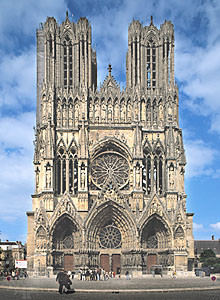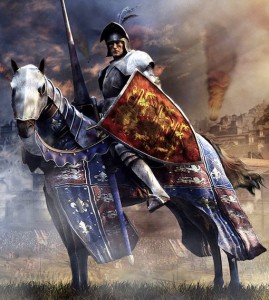The Middle Ages
Currently I am reading about the Middle Ages in Europe. They were a long, long time ago. The languages were different, nation-states did not exist, the Black Plague struck, warfare was almost constant (what’s new?), and the One Church was the only way to save your soul.
Things were beginning to change. Cities were growing, trade increasing, and the crusades, for all the harm they did, expanded Europe’s horizons. The opulence of the church and the nobility was on the increase and the great cathedrals were built.
All this was created on the backs of the mass of people on the bottom. For them, life was a constant struggle for survival. Crop failures, disease, exorbitant taxes to support the Church and the adventures of the nobles; and the depredations of invaders were a constant threat.
For the nobility, the demands of the church and the ideals of chivalry ruled behavior. Both systems had ideals too high for anyone to meet. As a consequence the standards were honored in the breach, with the threat of eternal damnation or revenge from a cuckolded fellow noble.
It seems that every institution was corrupt. As always, the people at the bottom supported the grandeur of the nobles and the church. The nobles were required by the chivalric codes to go to war for glory, loot, and to honor his chaste love for a maiden. A knights role was to prove his valor and greatness in battle. He was also to marry in order to produce male heirs and cement alliances with other noble houses. There were also social obligations, and the competition to display more grandeur in hunts, holiday celebrations, wars, and tournaments was the center of their lives.
The church was also a participant in medieval opulence. The gothic cathedrals, the riches members of the hierarchy displayed, the children sired by priests and bishops, the power alliances made by clerics from the nobility, and always, the display of riches meant to show the Kingdom of God to the masses, were terribly expensive. The source of the wealth for all this in an agrarian society again came those at the bottom of the social hierarchy. No tournaments, no hunts, just ceaseless toil with the tax collectors taking most of their produce.
The fourteenth, fifteenth, and sixteenth centuries saw accelerating change. The universities were growing, with knowledge increasing due to contact with the Moslem world, where much classical learning was preserved that were lost to the west during the invasions of the dark ages. This was important, as Aristotle’s world view was more rational and practical than the Platonic cave. Most of Aristotle came to the west in translation from Arabic.
Trade increased, cities grew, government began to be more centralized; and the influence of a growing mercantile and manufacturing middle class began challenging the power of the landed aristocracy. The increase in commerce also meant the spread of ideas.
Warfare, previously the domain of the nobility also changed as archers and pikemen, all commoners, began to mark the end of the armored knight on his war horse. An arrow or the sharp end of a pike held by a man on foot could bring an armored warrior down. Another innovation, gunpowder, meant the end of castles and city walls. A lead ball is effective in penetrating armor. This change in technology made the chivalric code of the stalwart knight engaging in singular combat obsolete.
The technical innovation most important in ending the Middle Ages was the printing press. Books were scarce and expensive when they were laboriously copied by hand. Literacy was most common in the church and with some of the nobility. A library of 100 volumes was a rare thing. Most books were in Latin, the language of the educated. The bulk of the population was illiterate.
When printed books became available at an affordable cost, often in the vernacular rather than Latin, literacy blossomed. With literacy, people began thinking for themselves, with two consequences, the Protestant Reformation and an explosion of creativity in art, learning, science (Then known as Natural Philosophy), and politics. The Renaissance had arrived. Change, which was gradual for centuries, accelerated. Conflict, a given in any historical period, continued, made more lethal by the changes in technology. The western world changed.

